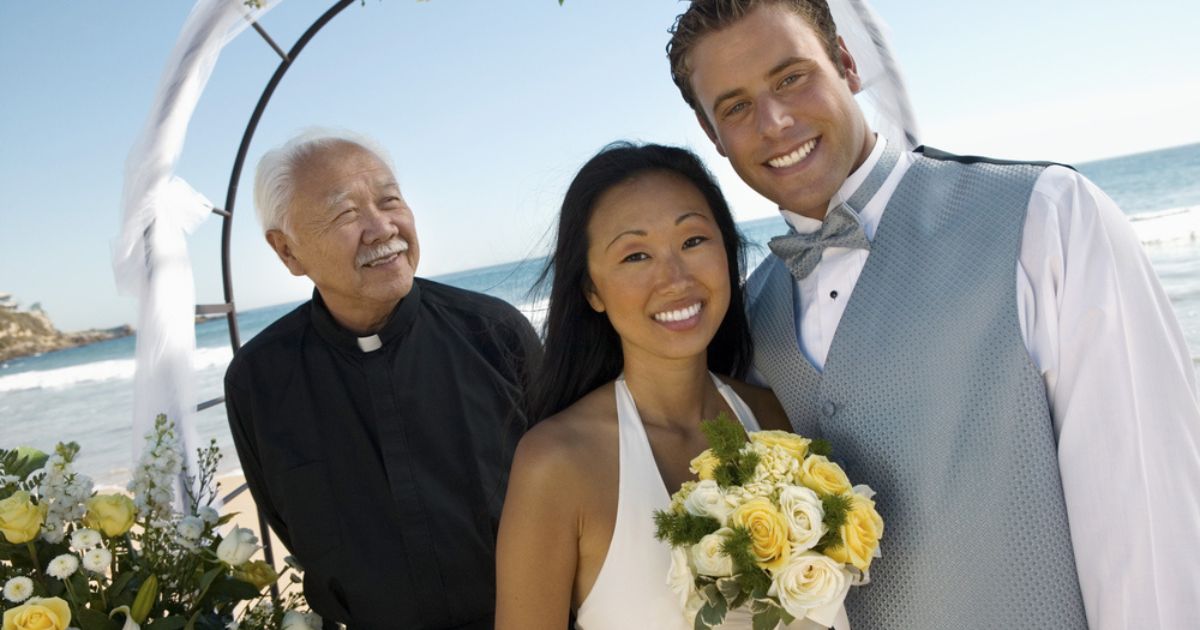Mixed marriage, also known as intercultural or interethnic marriage, is a growing phenomenon in the United States, reflecting the diversity of the country and changing attitudes. These unions bring both advantages and challenges for the couples involved. Here’s a detailed analysis of mixed marriages in the United States, including legal aspects, advantages, difficulties, and the realities of everyday life.
in the United States is growing in popularity, although its success rate depends on many factors, as in any type of union
1. Law and Mixed Marriages in the United States
Mixed marriages have long been a controversial issue in American history. Until 1967, racial segregation laws prohibited marriages between people of different races in several states. It was only with the landmark Supreme Court decision in Loving v. Virginia that laws banning mixed marriages were declared unconstitutional. Since then, all couples, regardless of their ethnic, cultural, or religious background, have the legal right to marry in the United States.
Today, the law protects mixed marriages just like any other union. However, couples may still face social discrimination or prejudice, though attitudes are gradually evolving.
2. Advantages of Mixed Marriages
Mixed marriages bring several unique benefits:
- Cultural Enrichment: Couples from different cultures or ethnicities benefit from an unparalleled cultural richness. They learn each other’s traditions, languages, customs, and beliefs, broadening their perspectives and creating a diverse family life.
- Tolerance and Open-mindedness: Being in a mixed marriage encourages tolerance and open-mindedness. Both partners are exposed to different perspectives, which pushes them to understand and accept differences.
- Multicultural Children: Children born from mixed marriages have the opportunity to grow up with a dual cultural identity. This can make them more adaptable, open, and aware of the world’s diversity.
- Better Understanding of Differences: Mixed couples are often better equipped to handle conflicts or misunderstandings because they continuously navigate between two different cultural worlds.
3. Challenges of Mixed Marriages
Despite the advantages, mixed marriages can also face several challenges:
- Cultural Clashes: Cultural differences can sometimes lead to misunderstandings or conflicts. Expectations around marital roles, child-rearing, or even religious practices can vary significantly between partners.
- Family or Social Opposition: Some mixed couples face opposition from their families or society. Prejudices or discrimination may still exist, particularly in conservative communities.
- Communication Issues: If the partners speak different native languages or come from cultures where emotional expression varies, this can lead to communication challenges.
- Social Pressure: Mixed couples may feel outside pressure to “succeed” as a symbol of integration, which can add stress to their relationship.
4. Everyday Life of Mixed Couples
The daily lives of mixed couples in the United States are influenced by a combination of personal and social factors. Here are some aspects of their experience:
- Raising Children: For many mixed couples, a central question is how to raise their children. What cultural and linguistic heritage should they pass on? Some couples choose to embrace both cultures and raise their children in a bilingual or multicultural environment.
- Adaptation and Compromise: Daily life often requires compromise. Whether it’s holiday traditions, cuisine, or social practices, couples need to adapt to each other’s needs and expectations.
- Social Support: Mixed couples may seek support from groups or communities where others share similar experiences. This can help them navigate the unique challenges they face.
- Community Integration: While many mixed couples live in cosmopolitan urban areas where diversity is common, some live in more conservative regions where they may feel isolated or face judgment.
5. Current Perspectives on Mixed Marriages
Mixed marriages in the United States are becoming more common. In 2020, about 17% of new marriages were mixed unions, a figure that has steadily increased over previous decades. This trend reflects growing acceptance of diversity and greater cultural blending.
Additionally, younger generations are generally more open to interethnic and intercultural relationships. Online dating platforms and broader access to other cultures through travel and immigration have also made it easier for mixed couples to form.
Conclusion
Mixed marriage in the United States is a reflection of the country’s increasing diversity and social changes. While it offers benefits in terms of cultural enrichment and open-mindedness, it is not without challenges, such as cultural differences, social prejudice, and the pressure of navigating multiple identities. Nonetheless, many mixed couples thrive, creating resilient and multicultural families that enrich American society as a whole.





